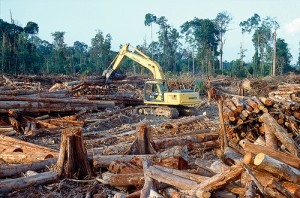
It appears the Malaysian government has decided to allow its drive for industrialization to trump the preservation of some of the world’s most important natural resources. Do the two really have to be at odds in the 21st century?
The county of Sarawak, in Malaysian Borneo, contains one of the oldest and most diverse rainforests in the tropics. It is home to thousands of species (many of them found nowhere else in the world), hundreds of potential pharmaceuticals, and a large portion of the world’s carbon stores. Why would anyone give up these unlimited benefits to make way for factories and heavy industry? Ask Malaysia.
A recent BBC article from Mike Williams, entitled Malaysia Picks Industrialisation Over Natural Treasures, details Malaysia’s choice to chase short-term goals of economic development in Sarawak while sacrificing its ancient forest resources.
Malaysia certainly didn’t do its math right. Developing steel, aluminum, palm oil, and various other industries in Sarawak may be economically effective at this moment, but it will cause long-term devastation that cannot be reversed as well as destroying potential revenue from natural sources.
In a report entitled the Economic Value of Biodiversity, The World Conservation Union (IUCN) stated: “We know that many biological resources do have significant economic value. We also know that many of the destructive activities themselves have very low economic value; therefore something is wrong with the way actual economic decisions are made.” Industries such as the palm oil industry continue to destroy rainforest at an alarming rate in order to provide product to consumers, and are blind to the grave consequences of their actions, particularly the destruction of valuable biological resources.
In my opinion, Malaysia failed to incorporate “ecosystem services” into revenue calculations. An “ecosystem service” is any benefit provided to humans from a natural system, ranging from natural water filtration to pharmaceuticals found in nature to eco-tourism. One important “service” of tropical rainforests is the storage of carbon. It is estimated that the concentration of CO2 in our atmosphere has increased by 30% since the advent of industrialization, which will only continue to increase with Sarawak’s industrialization. The cost of reversing the carbon emissions released into our atmosphere from deforestation, the cost of restoring species on the brink of extinction, the cost of cleaning up polluted water supplies, and the lost revenue from potential bioprospecting and ecotourism are just some of the risks Malaysia faces, risks that will far outweigh any profit Sarawak will gain in its planned rapid development of such industries as logging, food processing, and petrochemical production.
The decision to develop Sarawak at the expense of the forest reveals a distressing lack of care and understanding of the rainforest as well as an outdated model of ‘development’ at the expense of the environment. When asked whether trees are treasured in Borneo, Adie Abad, from the Bintulu Development Authority, simply responded: “We will plant those trees later on — alongside the road, no problem. But we have to give way to the industry to come in.” Planting new trees simply cannot replace a primary dense rainforest that took thousands of years to develop into the biodiversity hotspot we see today. Science tells us that primary forests are healthier, livelier, and contain more biodiversity than secondary stands, and are additionally an important carbon sink.
Adie Abad also demonstrated “concern” for local people, insisting that industry development in Sarawak will create jobs and benefit locals. RAN’s work with Long Teran Kenan, a local Sarawak community struggling with Indigenous rights violations against a palm oil developer in the area, IOI Group, has shown that development in Sarawak has thus far only hurt local people.
Have we not learned our lesson from history? Western Europe, and even the East Coast of the United States, are today left with only secondary forest stands as the result of a model of industrialization that did not value environmental resources. As the wise conservation biologist E.O. Wilson once said, “Destroying the rainforest for economic gain is like burning a Renaissance painting to cook a meal.” The Western World has already made its mistakes. It is up to Malaysia to look at history and science, and find a new development pathway that values its rich natural resources.











